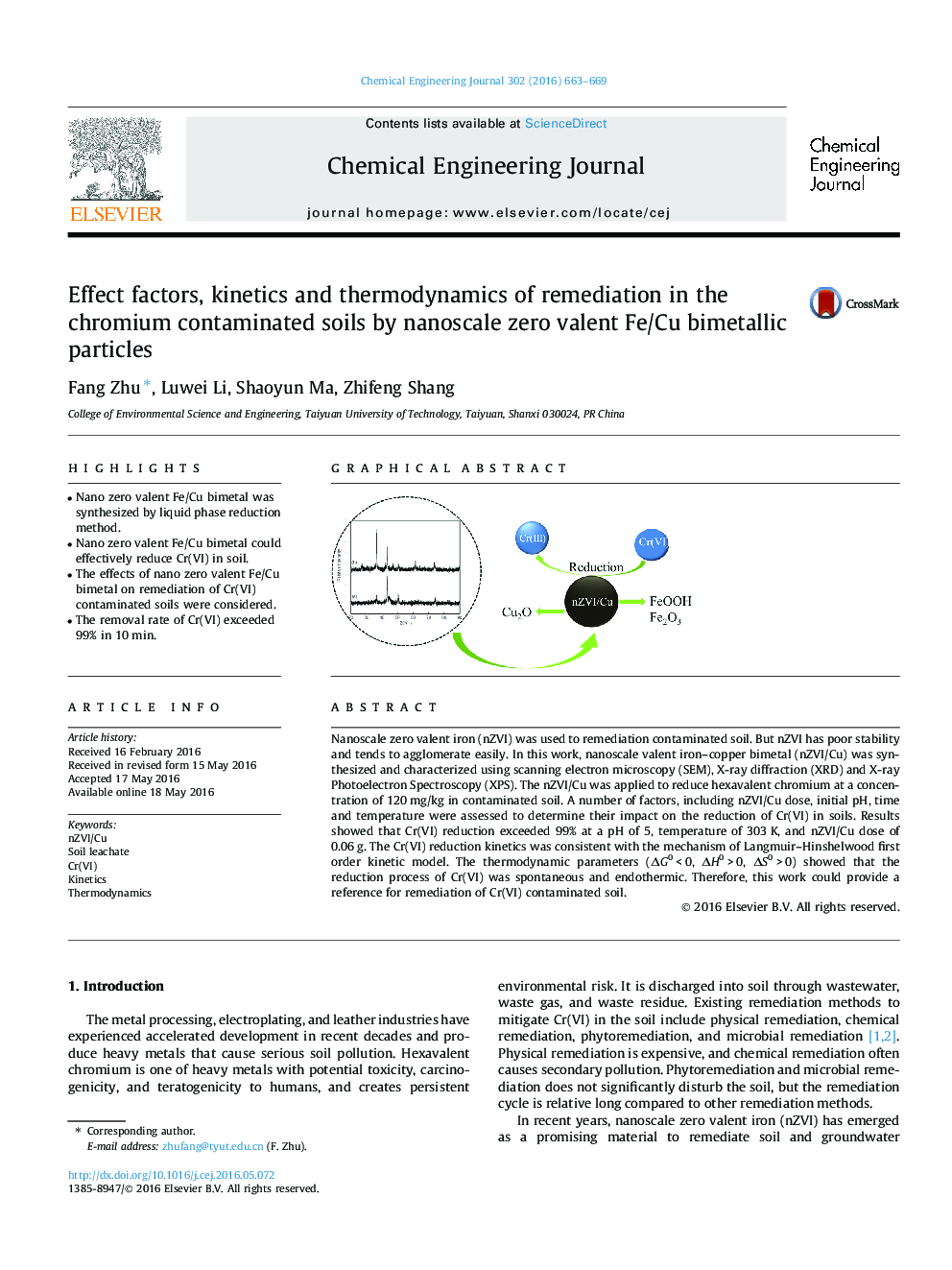| Article ID | Journal | Published Year | Pages | File Type |
|---|---|---|---|---|
| 145339 | Chemical Engineering Journal | 2016 | 7 Pages |
•Nano zero valent Fe/Cu bimetal was synthesized by liquid phase reduction method.•Nano zero valent Fe/Cu bimetal could effectively reduce Cr(VI) in soil.•The effects of nano zero valent Fe/Cu bimetal on remediation of Cr(VI) contaminated soils were considered.•The removal rate of Cr(VI) exceeded 99% in 10 min.
Nanoscale zero valent iron (nZVI) was used to remediation contaminated soil. But nZVI has poor stability and tends to agglomerate easily. In this work, nanoscale valent iron–copper bimetal (nZVI/Cu) was synthesized and characterized using scanning electron microscopy (SEM), X-ray diffraction (XRD) and X-ray Photoelectron Spectroscopy (XPS). The nZVI/Cu was applied to reduce hexavalent chromium at a concentration of 120 mg/kg in contaminated soil. A number of factors, including nZVI/Cu dose, initial pH, time and temperature were assessed to determine their impact on the reduction of Cr(VI) in soils. Results showed that Cr(VI) reduction exceeded 99% at a pH of 5, temperature of 303 K, and nZVI/Cu dose of 0.06 g. The Cr(VI) reduction kinetics was consistent with the mechanism of Langmuir–Hinshelwood first order kinetic model. The thermodynamic parameters (ΔG0 < 0, ΔH0 > 0, ΔS0 > 0) showed that the reduction process of Cr(VI) was spontaneous and endothermic. Therefore, this work could provide a reference for remediation of Cr(VI) contaminated soil.
Graphical abstractFigure optionsDownload full-size imageDownload as PowerPoint slide
